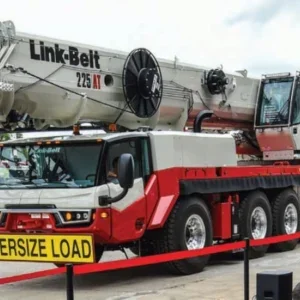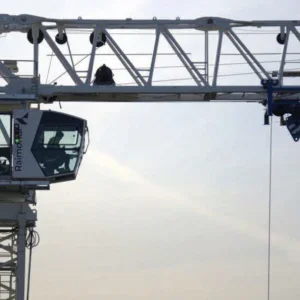A complex lifting operation is one where unusual or dangerous loads are lifted; lifts are performed in difficult or hazardous environments; the lift is performed in unusual circumstances; more than one lifting appliance is required or which uses special lifting equipment.
In the various articles I have written, I have regularly cited the relevant UK legislation. Although it has the force of law only within the UK, it is nevertheless often followed as good practice in other parts of the world. In this context, adequate planning is one of the key requirements of the Lifting Operations and Lifting Equipment Regulations (LOLER) simply because experience has shown how important it is to safety.
In recent years, written plans have become a lot more commonplace, and plans or method statements are frequently required when working on other employer’s premises. Unfortunately, the content of these documents and what is done with them often falls far short of good practice. In effect, the preparation of the document is a box-ticking exercise. Whether it adequately addresses everything it should, presents the information in a concise, clearly understandable way, and is followed in practice, is often ignored. The document is likely to sit in a file and never be referred to unless something goes wrong. That is not how it should be.
To be effective, the plan should be available to all the key personnel involved. It should be presented in a style which is user friendly. It should use standard terms for equipment rather than colloquialisms. It should avoid jargon unless it will be understood by all involved. Similarly it should avoid acronyms unless they are explained somewhere. It should have an appropriate level of detail. It is not an ‘idiot’s guide’ but should provide the detail that a suitably trained person will need to carry out the operation.
The starting point for the plan should be a clear description of what the lifting operation is to achieve. For example, if it is an operation to install prefabricated concrete structural elements, it could be “lift, orientate and present for fixing prefabricated concrete arch sections onto prepared foundations.”
A risk assessment will be required. Many sites have standard procedures and requirements which control the risks arising from the hazards which are a permanent feature of the site. Examples might include permanent sources of noise or heat, if vehicles are operating, or hazards requiring personal protective equipment. The risk assessment for the lifting operation should focus on any additional hazards associated with the lifting operation or any risk arising from the permanent hazards which will change as a consequence of the lifting operation.
In many plans I have seen risk assessments which repeat all the standard risks and safety requirements. The reader is left to search for what is new or different. There is no harm in appending the standard procedures to reinforce their message but please don’t use them in a way which camouflages what is specific to the operation. Similarly I have seen risk assessments which include temporary hazards such as those arising from the weather prevailing at the time that the risk assessment is made. These may not be relevant at the time the plan is executed. Some operations will need planning well in advance and hazards which can vary from day to day, such as those arising from the weather, need to be assessed at the time of the operation.
The method of carrying out the lifting operation is next. Essentially it is the sequence of events starting with any preparation work. This includes installation or erection of the lifting equipment and preparation of the load and the areas where the load is to be lifted from, travelled through and landed. It may also include permits to work in the relevant areas.
In the context of mobile crane operations, the access to the site and the load bearing capability of the site are key considerations as is the area available for erection of the crane should it be of a size which requires transportation in sections. The importance of addressing these matters at an early stage cannot be over-emphasised. What might be considered a simple routine lifting operation when the crane is on good hard standing becomes quite complex when, for example, the crane is to operate from the top of a soft embankment.
Whilst on this subject, large crane operations often involve smaller cranes and lorry loaders to transport and assemble everything necessary. Whilst the lifting operation that the large crane is to carry out may be well planned, the operations which these ancillary cranes carry out are often overlooked or treated as routine simple lifting operations. That may not be the case. For planning purposes it may be more practical to treat such work as separate lifting operations but the need for it to be done should nevertheless be included as a stage in the main plan.
It should, perhaps, go without saying that the crane must be suitable for the lifting operation. However, many crane incidents have occurred because the capacity of the crane was inadequate, taking into account the radius, height of lift and shape of the load. Another too frequent cause is a failure to fully deploy the outriggers because of a lack of space or reach. Such incidents are indicative of a failure to adequately research the site and the lifting operation before selecting the crane.
The load may need preparation before lifting can commence. If so then again it may be better to treat the detail of such work as a separate operation but still include the need to do it as a stage in the plan.
The route the load is to take may need preparation, especially if the load is to be lifted over operational plant or other personnel who may need to be temporarily excluded. The landing site may also need preparation to ensure that it has adequate load bearing capacity and the load can be landed safely. Some lifting operations may involve orientating the load either in the air or whilst lifting or lowering. The method of doing this and point at which it is done should be included in the plan.
Next the plan should list the equipment and personnel required. The equipment list should be as specific as possible especially if special purpose items are required. However, even when general purpose items such as slings are to be used, the type, capacity and length should be included. Illustrations can be very helpful if done correctly. They do not have to be a work of art. Simple freehand line drawings, approximately to scale, can show what equipment is used, where it is used and how it is used. Link the illustration to the equipment list. For example, simply number each item in the equipment list and use the same numbers in the illustration. If necessary, annotate the illustration to explain how the item is used.
If it is likely to be repeated at some point, such as may apply to a maintenance operation, consider taking photographs during the lifting operation for future reference. Now that digital cameras are commonplace, this is an easy and cheap way of adding future value to the plan.
The list of personnel is really a list of job functions. It should include any personnel required for preparation work unless that is dealt with separately. Those required for the lift will depend upon the complexity of the operation and the method of communicating with the crane driver. Adequate supervision is essential, particularly if the operation requires the coordination of two or more operatives.
The method of communicating with the crane driver should be included in the plan. Where there is a clear line of sight, hand signals are usually the best option. There are standard signal systems – such as that given in BS 7121-1. However, there are also variations, so ensure everyone involved is familiar with the system in use. The alternative is voice communication, either by radio or by a hard wired system. Either way there should be a protocol to avoid any misunderstandings. Local noise and interference, as well as a person’s accent, can make the message unclear. The number of people connected to the system should be kept to a minimum, ideally just the driver and banksman. However that is not always practical. Essentially each person in the system should have a distinct ID call sign. Any motion command message should use this to identify who it is for and who it is from. The recipient should repeat the command message back as confirmation. This allows the sender to check that the command has been correctly understood and take quick corrective action if not.
The plan should be checked by the appointed person in overall charge of the lifting operation. If satisfactory, it should be given a plan reference number, signed and dated. Plans often have to be made well in advance of the lifting operation and have to be based on certain assumptions. For example, if installing new equipment, the weight of the load may be just an estimate. Anything likely to change from that assumed needs to be checked when the information is available. Any change required to the plan should go back to the appointed person for checking and approval. The change and date should be recorded to provide an audit trail. Existing plans used for the same operation on a previous occasion should always be reviewed to check whether they are still valid and, again, a record made.
Finally, the plan must be made available to everyone involved. Good practice is to have a ‘tool box’ talk just before the operation commences. That is the opportunity to ensure that everyone has the latest version, has read and understood it and knows their role.
At that point everything should be in place for a safe and successful lifting operation. However things do not always go according to plan. Sometimes it should have been foreseeable, such as when a vital piece of equipment has been overlooked or not arrived. Sometimes it is not foreseeable, such as emerging work which comes to light only once the operation has begun. The immediate consequence is usually only a delay. However, what happens next can seriously compromise safety. Many incidents have occurred because of ill thought out changes to the plan made under pressure of time. Therefore the plan should always include a procedure to follow when things do not go according to plan. In particular it should ensure that any decision about changes goes to the appropriate level of authority.
Good planning gives you good control of the lifting operation. There is a financial incentive. It is essential for efficiency as well as for safety.






